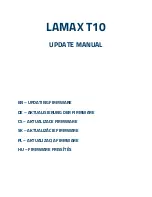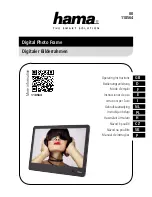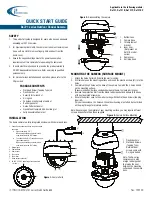
AD-081CL
- 16 -
7.1.12 High Dynamic Range function
A CCD camera has ability to capture high speed moving objects or high luminance objects by
using the electronic shutter function. The AD-081CL camera uses this shutter function to
simultaneously capture two images with different shutter speeds. As a result, the AD-081CL can
output two identical images with different video levels, one for capturing the details in the
dark portion and the other for maintaining details in the brightest portions of the image.
In the PC, these images can be composited into a single image providing proper exposure and
details across a wider dynamic range than is normally possible with CCD sensors. In this way the
camera can provide dynamic range equal to specialized CMOS sensors, without the noise
tradeoffs commonly associated with that technology.
The following illustrates the high dynamic range concept.
+
100%
200%
100%
100%
200%
200%
BW 1 Image
Shutter OFF (1/30)
BW 2 Image
Shutter 1/1000
Image in this
part is
clipped
Composite image of BW 1
and BW 2
Although total
video level is
lower but high
light image can be
viewed
⇒
Fig.16 High Dynamic Range Conceptual Drawing
7.1.13 Shading compensation (Commands SDM1,SDM2,RSem Rate mode.1,RS2)
AD-081CL implements a compensation circuit for the white shading which could be caused in
the prism or the optics. This circuit divides the whole image into 128 regions horizontally and
96 regions vertically and compensates the divided video level using the level of the center as
the reference.
There are three memories inside the camera for shading compensation. One is for the factory
setting data and other two memories are for user settings. Commands SDM1 and SMD2 activate
the shading compensation using setting 1, 2 or 3. Setting 1 is for the factory setting, while
settings 2 and 3 are for user settings.
When SDM1/SDM2 is set at 2 or 3, the shading
compensation can be executed under operating conditions by commands RS1 and RS2 and
stored in memories.
Note: This image can be
composited at PC.
















































